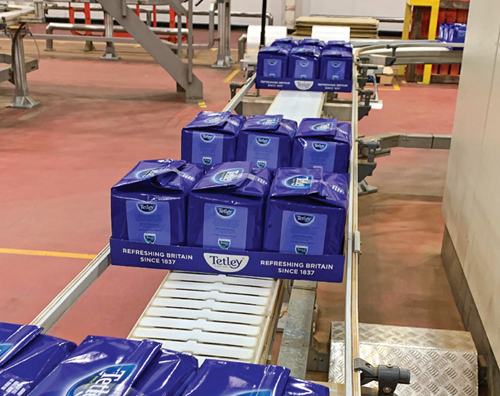Create a future-ready organisation
During the year we underlined a four-pronged approach to building a future-ready organisation. It entailed a restructuring and re-alignment of organisational functions, strengthening of business capabilities, harmonisation of systems and processes and becoming a purpose-led organisation where everyone works with a unified vision.
STRENGTHENING CAPABILITIES ACROSS FUNCTIONS
While crafting the new organisation design, we focused on building for the future. This meant that we identified key capabilities that we needed to acquire or strengthen in order to become best in class.

Chief Digital Officer
This year saw us bringing on board T. V. Swaminathan as our Global Chief Digital Officer (CDO) to the Executive Committee. He is responsible to chart out and help execute a digital roadmap. He is also focusing on strengthening our analytical capabilities and IT infrastructure.

Shopper Marketing
The function is dedicated to crafting go-to-market strategy, while executing and tracking business plans. It represents the sales function in Integrated Business Planning and centrally runs the entire sales activity calendar. The function is responsible for channel loyalty programmes, field-force effectiveness/ productivity programmes and sell-out activations to aid offtake.
R&D
We re-organised the structure with focus on four key pillars – category-centric R&D verticals, scientific research, analytical services and global packaging to drive future innovation pipeline. The key focus for R&D is to deliver innovative products with stronger nutritional claims or which are new to market, across business categories.

E-commerce
We enriched the distribution channel with a potent mix of in-house and experienced professionals from the industry to sharply focus on customer, category, digital reach and serviceability.

Revenue Growth Management
The RGM organisation works closely with functions, such as Brand, Sales and Finance to leverage analytics in discerning customer perception of product value and then sense, predict and shape the consumer's path to purchase, by optimising product, assortment, price, place, pack, promotion and availability.
Investor Relations
We have a dedicated Investor Relations vertical to provide best-in-class transparency, communication and two-way engagement between the Company and our investors. The vertical acts as a conduit to keep investors updated on key business, strategic and financial developments regularly, and in turn collect their feedback and communicate it to relevant stakeholders within the organisation.

How Tetley managed to keep shelves stocked in UK during demand uncertainty
The last year was a lesson in the importance of planning ahead for businesses. As a far-sighted organisation, our efforts to ready ourselves to meet future challenges was in full swing before the pandemic even hit. We leveraged the findings of an ongoing study to keep Tetley products stocked on shelves across UK during the pandemic. Read about this strategy below.
Challenge
Manufacturers often strive for high levels of asset utilisation to maximise return on their capital investment. This results in assets running harder in the short-term and being left with little capacity in case of sharp spikes in demand. This hinders the ability to deliver on time, in full to the customer at the lowest operating cost, in a sustainable and responsible way. Promotional strategies, such as Buy-One-Get-One (BOGO) distort the demand signal, making it less predictable. Larger buffers need to be put in place to ensure that customer demand can be fulfilled. Understanding demand patterns for individual products and the commercial strategies that drive them (demand profiling) is an essential aspect of supply chain management. The need was to find an approach that was tailored to our business and customer needs.
Solution
We undertook collaborative research and explored different configurations to optimise the supply chain through buffer management by examining the trade-offs between inventory and capacity buffers and the alignment of buffers with commercial strategy.
Using sales and stock data, product demand profile was analysed at a stock keeping unit level. Models were developed, which tested different configurations of supply chain, stock level and investment. They identified an optimal level of utilisation that would keep the business competitive, while allowing spare capacity to deal with fluctuations in demand. When panic buying, triggered by the COVID-19, resulted in a huge demand wave for tea in supermarkets, we could respond with agility to the rapidly shifting market conditions and gain competitive advantage.
Outcome
We were able to deliver 35% surge capacity to supply our customers and consumers and keep the UK drinking tea. Putting the strategy to application, we had spare capacity, optimal stock levels and a highly flexible and committed workforce who could transfer their skills to multiple lines. This helped us take the lead in market share during this period, demonstrating how a flexible supply chain helps build competitive advantage and future readiness.
